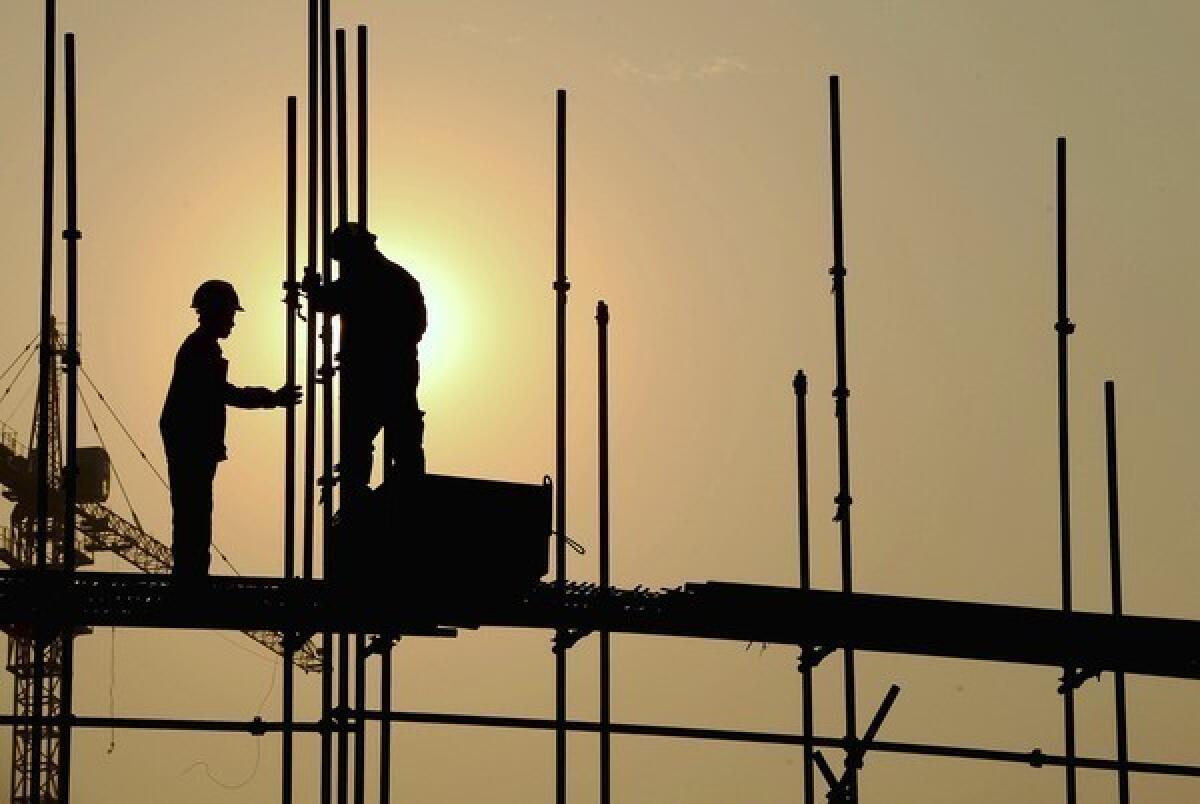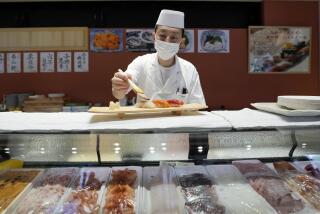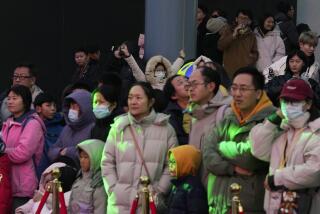China’s economic growth slowest in more than 3 years

BEIJING — China grew at its slowest pace in 31/2 years, the latest sign that the nation long famed for its economic miracle is still struggling to pull out of a steeper-than-expected slide.
The Chinese economy expanded 7.4% in the three months ended in September compared with the same period a year ago. That’s a tick below the full-year growth target of 7.5% and the lowest quarterly performance since the country grew 6.6% in the first three months of 2009.
By comparison, China grew 7.6% in the second quarter and 8.1% in the first quarter. Chinese growth has now weakened for seven consecutive quarters.
The slowdown in China is already rippling across the globe, sinking demand for commodities and eating away at profits for multinational corporations such as Coca-Cola and Caterpillar.
Though the country’s growth is robust compared with other major economies, it’s a far cry from the double-digit pace that had been the norm in the three decades during which the world’s most populous country transformed itself from a backwater to an economic juggernaut.
Analysts say China is now at a crossroads, in need of difficult reforms to encourage more domestic consumption, larger household incomes and higher-value industry.
That will take years, and until then, the country will remain vulnerable to the ebb and flow of export demand. Exports account for about a third of the Chinese economy.
Part of the current slowdown is the result of a lackluster appetite for Chinese goods overseas, particularly in Europe, which is grappling with a festering debt crisis.
But the weakness is also partly self-inflicted as China’s central government has tried to wean the country off its over-reliance on infrastructure and real estate to power growth. The Chinese real estate market is tightly regulated, with controls aimed at stamping out speculators and soaring housing prices.
The question is how much of a slowdown policymakers can stomach. A once-in-a-decade leadership transition set for next month has only added to the uncertainty.
The current leaders have already pledged fiscal support for public transportation projects, subsidies for energy-saving consumer goods and affordable housing.
Premier Wen Jiabao was quoted in state-run news media Wednesday as saying China still faced “considerable difficulty” in the fourth quarter but that he was confident the country would meet its growth target by year’s end.
Beijing doesn’t want a repeat of 2009, when it had to flood the country with billions of dollars in bank loans to blunt the effects of the global financial crisis. While that pushed growth up to its usual torrid pace, it also led to a housing bubble and soaring inflation.
The good news for policymakers is that China is still adding jobs, easing the pressure to ramp up any major stimulus or cut interest rates.
“As long as the labor market remains healthy, policymakers will see little need to stimulate a strong turnaround in investment,” said Mark Williams, an economist for Capital Economics.
China added 9.18 million jobs in the first eight months of the year, exceeding its target of 9 million. But officials warned that the pace has been slowing since April, especially in the eastern, export-oriented provinces.
Trade data released last weekend show exports growing 9.9% in September compared with a year earlier. But officials in Beijing acknowledge it will be nearly impossible for the country to meet its annual growth target of 10%.






